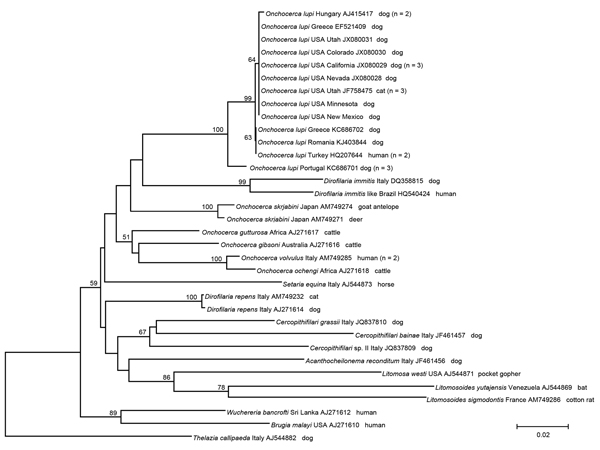Volume 21, Number 5—May 2015
Dispatch
Canine Infections with Onchocerca lupi Nematodes, United States, 2011–2014
Figure 2

Figure 2. Phylogeny of Onchocerca lupi and other filarial nematode species based on partial sequences of the cytochrome c oxidase subunit 1 gene. Thelazia callipaeda was used as an outgroup. Bootstrap confidence values (values along branches) are for 8,000 replicates. GenBank accession numbers, number of haplotype sequences (values in parentheses), and geographic origins are shown. Scale bar indicates nucleotide substitutions per site.
Page created: April 18, 2015
Page updated: April 18, 2015
Page reviewed: April 18, 2015
The conclusions, findings, and opinions expressed by authors contributing to this journal do not necessarily reflect the official position of the U.S. Department of Health and Human Services, the Public Health Service, the Centers for Disease Control and Prevention, or the authors' affiliated institutions. Use of trade names is for identification only and does not imply endorsement by any of the groups named above.